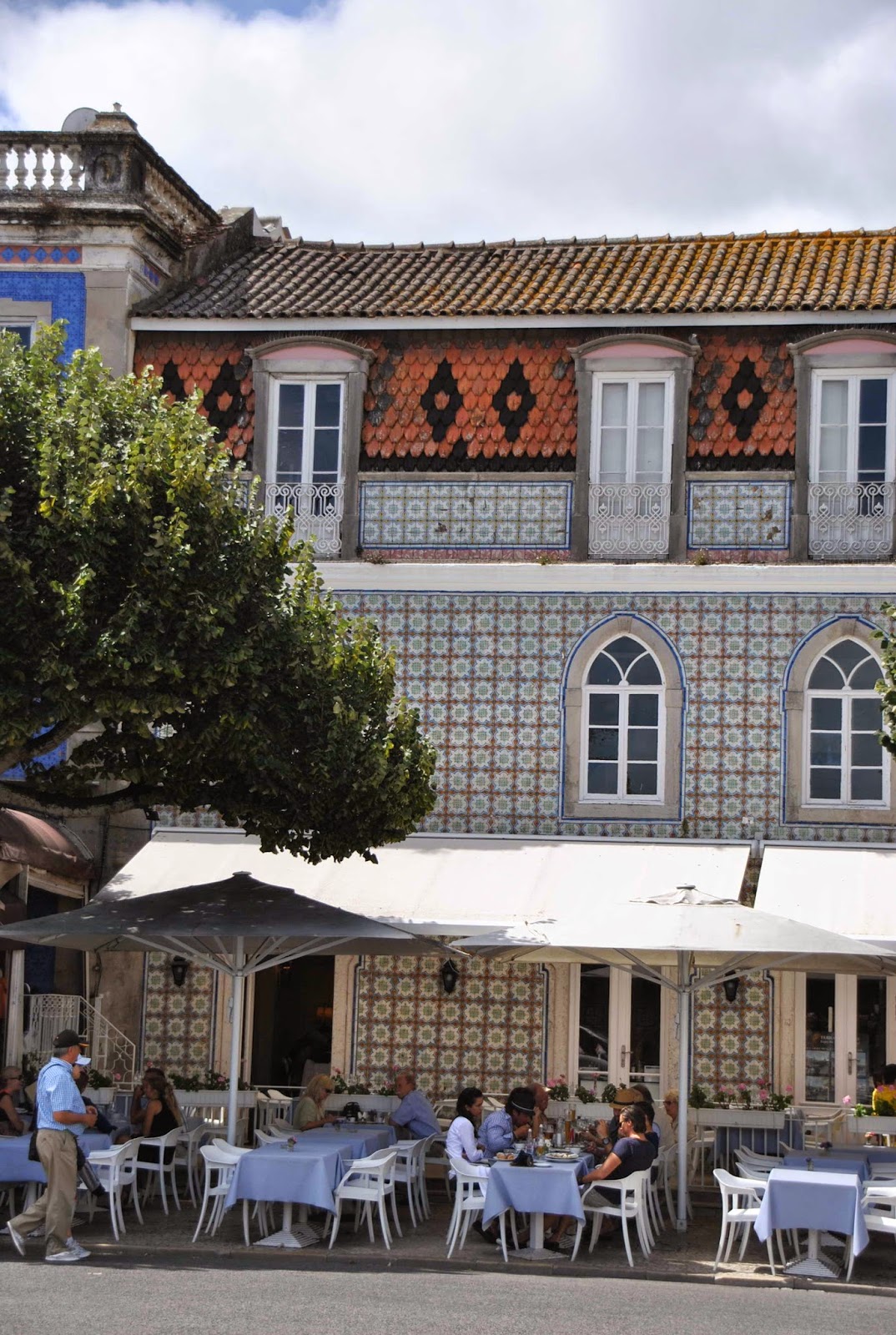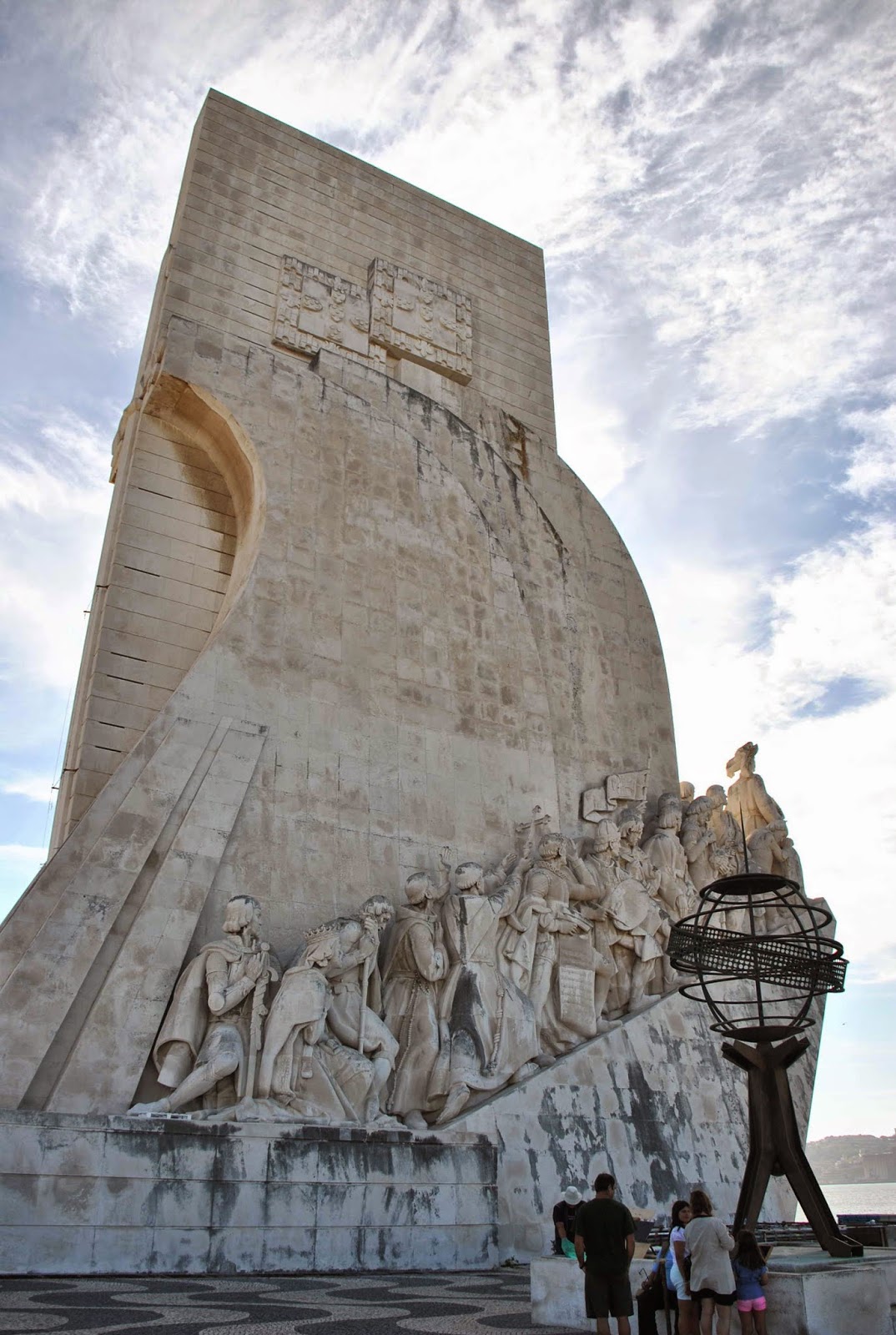Yet another all-day tour! We'll certainly need the next sea
day break from early alarms, but in the meantime we find the best way to get a
feel for a new place is to see as much of it as possible. In this case our tour
took us around Lisbon, along the coast to Estoril and into the hills to the
town of Sintra.
 |
| The view from the ship |
 |
| If this looks suspiciously like the Golden Gate Bridge, that's because it was built by the same company. Its even the same colour! |
 |
| A replica of the Statue of Christ the Redeemer in Rio de Janeiro |
Lisbon is another of those cities that has been in existence
for a very long time. In fact, the Phoenecians were the first to settle the
area and create a seaport. The history of Portugal is pretty much the history
of Lisbon, with many battles fought over the city and the surrounding area
because of its strategic location at the mouth of the Tagus River.
 |
| That little island in the distance with the lighthouse marks the meeting of the Tagus River and the Atlantic Ocean |
What truly put Lisbon, and then Portugal, on the map was the
work of Prince Henry, the third son of one of the kings of Portugal, who
ultimately became known as Henry the Navigator. His interest in navigation,
shipbuilding and cartography and his desire to have Portugal be the first
country to send ships round trip to India led to many innovations, including
ship design, navigational aids like the sextant, and improved map-making. His
dream was realized, unfortunately a number of years after his death, when Vasco
da Gama became the first to make that trip. There are many tributes to Henry
and other explorers, but the nicest is this one at the riverside. It shows
Henry leading the way for explorers to follow on a stylized ship.
 |
| Not to forget about the scaffolding! The cleaning program wasn't quite finished so the scaffolding was still up on one side. |
 |
| A world map made of marble in the square by the monument |
One of the older areas of Lisbon is called Belem. The Belem
Tower is one of the more prominent features at the waterfront, along with a
model of a small plane which was the first one to make a crossing from Lisbon
to Buenos Aires in the early 1900s. It was an amazing feat for such a small plane
and it had to land numerous times in the ocean to be refueled.
 |
| The Belem Tower |
There was also once a small chapel here where sailors would
go to pray before long sea voyages. It had been large enough to accommodate everyone
when Lisbon was a relatively small port, but once da Gama had opened up the
trade routes to India and more ships used the port, the chapel became rather
small. The king of the time decided that they needed a larger one, so he had
this built instead:
 |
| The Church and Monastery |
 |
| Entrance to the Church. Henry the Navigator is depicted in front of the window |
The church is at one end of the building; the rest was built
as a monastery. That part is now the Maritime Museum. Apparently the church and
monastery were built entirely from the profits of the trade in spices, textiles
and other products the traders brought from India, as the king was
automatically entitled to 20% of the value.
 |
| One of the chapels - Brazilian wood covered in 18 carat gold leaf |
 |
| The interior. This church withstood the great earthquake in the mid 1700s, probably because it was built on sand and was able to shift |
 |
| The crypt of Vasco da Gama |
One of the very obvious remnants of Lisbon's history is the
aqueduct. This doesn't date back to the time of the Romans, as far as we can
recall from the tour guide, but it was used up until the 1960s to carry water from the hills into
the city.
After our tour of the city, we drove along the coast to the
town of Estoril. It was established by Portugal was Phillippa of Lancaster, an
English princess. She found the coast at Estoril reminded her of her homeland
more than Sintra did, so she decided to move the royal retreat from the hills
to the coast. Ever since then, it has been the most popular place for people to
get out of the city. It is a very nice area, with some beautiful, and
expensive, houses along the seaside.
From Estoril, we turn inland toward Sintra. The 'mountains',
more like high hills as the highest is only about 600 metres or 2,000 feet, are
a ways inland, but apparently not so far that lookouts in the fortress above
the town could not keep an eye on the ocean and the Tagus and give early
warning of potential military attack. The town was also established as a royal
retreat in the time before Phillippa, hence the fortress, and literally seems
to be built into the hills. There doesn't seem to be a flat stretch of road
anywhere. The roads are so narrow and twisted that any buses can only go to a
certain spot to pick up and drop off, and are only allowed to stay for a few
minutes at a time.
Once we arrived in Sintra, we had a buffet lunch at a local
hotel and some time to wander about on our own. We did a little shopping.
 |
| The fortress |
 |
| A lovely example of the Portuguese penchant for cladding houses in ceramic tiles. Not only is it beautiful, but it protects the building from the weather. |
 |
| Some of the houses in the hills above town |
 |
| The Town Hall |
 |
| One of the steep and narrow streets in the middle of the old town |
 |
| Looking down over the town |
Since the Portuguese are famous for their painted ceramic
tiles, we went looking for something that we could put into the kitchen. We
came across a small ceramic shop that was owned by a mother and daughter. The
mother was there and showed us into her studio where she was just painting a
large multi-tile piece. The shop was just filled with gorgeous works, and we
did find something that will go on display as soon as we get home.








No comments:
Post a Comment